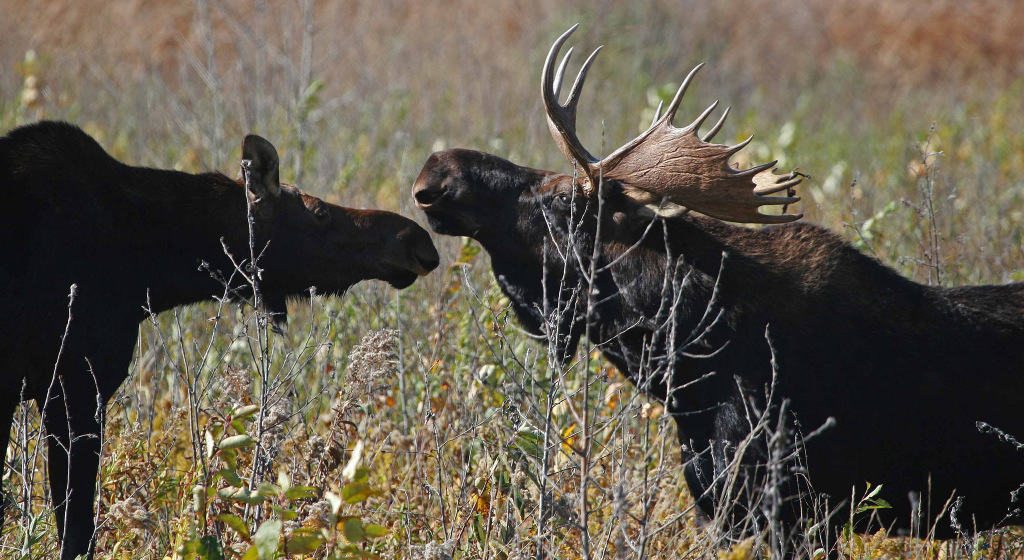
In northern Minnesota, the moose population is less than half of what it was just nine years ago. A recent aerial survey showed an estimated 3,450 animals in the state, compared to 8,840 in 2006. While there was no statistically-significant change this year, wildlife managers say the trend points downward.
The Department of Natural Resources qualified the announcement by saying population estimates are always uncertain to a degree, and most importantly show long-term trends. Numbers have been dropping rapidly for about a decade, as the DNR and other agencies seek to figure out why.
Scientists point to wolves, climate change, ticks, habitat loss as possible factors in the decline. To better understand what’s happening, the state has embarked on a broad, multi-year study in which dozens of adult and young moose are collared with GPS trackers. This allows researchers to locate animals soon after they die, to study the carcasses and learn what caused their death.
In 2014, 11 percent of collared moose died, which was within normal ranges for stable moose populations. The previous year, 20 percent died – well above the normal range. Last year, predators killed six of the animals, and brainworms and other health issues caused the other five deaths. Moose hunting was suspended in 2013.
To conduct population estimates, researchers fly over 52 randomly-selected areas of 13 square miles each.
“Survey conditions this year were generally good across moose range, although there was much less snow compared to last year,” Lou Cornicelli, DNR wildlife research manager, said in a statement.
The DNR says it anticipates the population will continue to decline for the foreseeable future. Thirty-six adult moose will be collared in the coming weeks, and 50 newborn calves will be collard this spring as part of the ongoing mortality study.

